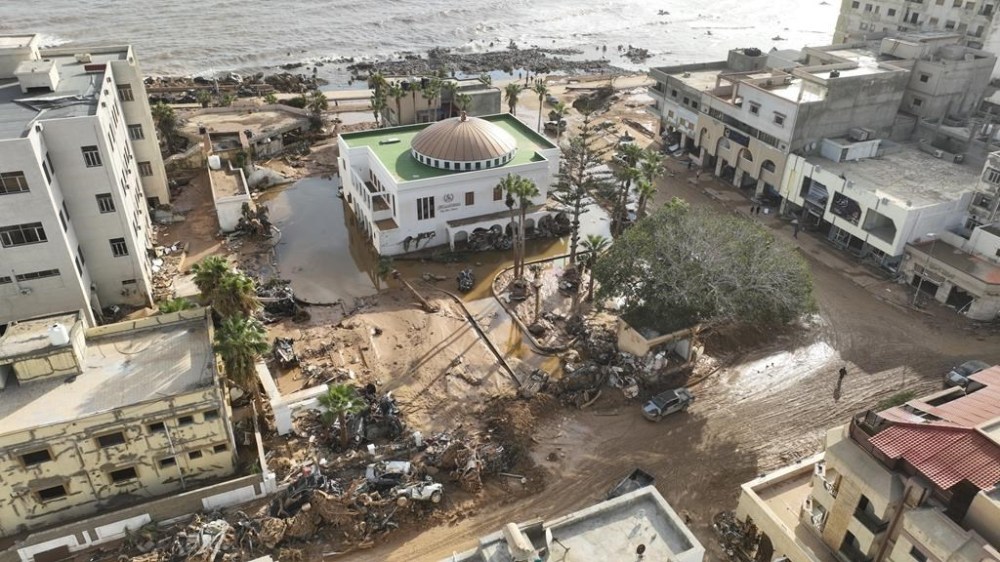Cyclone that devastated Libya is latest extreme event with some hallmarks of climate change
Advertisement
Read this article for free:
or
Already have an account? Log in here »
To continue reading, please subscribe:
Monthly Digital Subscription
$0 for the first 4 weeks*
- Enjoy unlimited reading on winnipegfreepress.com
- Read the E-Edition, our digital replica newspaper
- Access News Break, our award-winning app
- Play interactive puzzles
*No charge for 4 weeks then price increases to the regular rate of $19.00 plus GST every four weeks. Offer available to new and qualified returning subscribers only. Cancel any time.
Monthly Digital Subscription
$4.75/week*
- Enjoy unlimited reading on winnipegfreepress.com
- Read the E-Edition, our digital replica newspaper
- Access News Break, our award-winning app
- Play interactive puzzles
*Billed as $19 plus GST every four weeks. Cancel any time.
To continue reading, please subscribe:
Add Free Press access to your Brandon Sun subscription for only an additional
$1 for the first 4 weeks*
*Your next subscription payment will increase by $1.00 and you will be charged $16.99 plus GST for four weeks. After four weeks, your payment will increase to $23.99 plus GST every four weeks.
Read unlimited articles for free today:
or
Already have an account? Log in here »
Hey there, time traveller!
This article was published 12/09/2023 (782 days ago), so information in it may no longer be current.
The Mediterranean storm that dumped torrential rain on the Libyan coast, setting off flooding that’s believed to have killed thousands of people, is the latest extreme weather event to carry some of the hallmarks of climate change, scientists say.
Daniel — dubbed a “medicane” for its hurricane-like characteristics – drew enormous energy from extremely warm sea water. And a warmer atmosphere holds more water vapor that can fall as rain, experts said.
It’s difficult to attribute a single weather event to climate change, “but we know there are factors that could be at play” with storms like Daniel that make it more likely, said Kristen Corbosiero, an atmospheric scientist at the University at Albany.

Medicanes form once or twice a year in the Mediterranean, and are most common from September to January. They’re not generally true hurricanes, but can reach hurricane strength on rare occasions, said Simon Mason, chief climate scientist at the Columbia Climate School’s International Research Institute for Climate and Society.
Daniel formed as a low-pressure weather system more than a week ago and became blocked by a high-pressure system, dumping extreme amounts of rain on Greece and surrounding areas before inundating Libya.
Warming waters also are causing cyclones to move more slowly, which allows them to dump much more rain, said Raghu Murtugudde, a professor at the Indian Institute of Technology, Bombay and emeritus professor at University of Maryland.
What’s more, he said, human activity and climate change together “are producing compound effects of storms and land use.” Flooding in Greece was worsened by wildfires, loss of vegetation, and loose soils and the catastrophic flooding in Libya was made worse by poorly maintained infrastructure.
Dams that collapsed outside Libya’s eastern city of Derna unleashed flash floods that may have killed thousands. Hundreds of bodies were found Tuesday and 10,000 people reported still missing after floodwaters smashed through dams and washed away entire neighborhoods of the city.
But the warm water that allowed Daniel to intensify and and fed the exceptional rainfall are a phenomenon being observed around the globe, said Jennifer Francis, a senior scientist at Woodwell Climate Research Center.
“Nowhere is immune from devastating storms like Daniel, as demonstrated by recent flooding in Massachusetts, Greece, Hong Kong, Duluth, and elsewhere,” said Francis.
Karsten Haustein, a climate scientist and meteorologist at Leipzig University in Germany, cautioned that scientists haven’t had time yet to study Daniel, but noted that the Mediterranean has been 2 to 3 degrees Celsius warmer this year than in the past. And while weather patterns that formed Daniel would have occurred even without climate change, the consequences probably wouldn’t have been as severe.
In a cooler world, Daniel probably “wouldn’t have developed as quickly and rapidly as it did,” Haustein said. “And it wouldn’t have hit Libya with such ferocious strength.”
___
Associated Press climate and environmental coverage receives support from several private foundations. See more about AP’s climate initiative here. The AP is solely responsible for all content.


